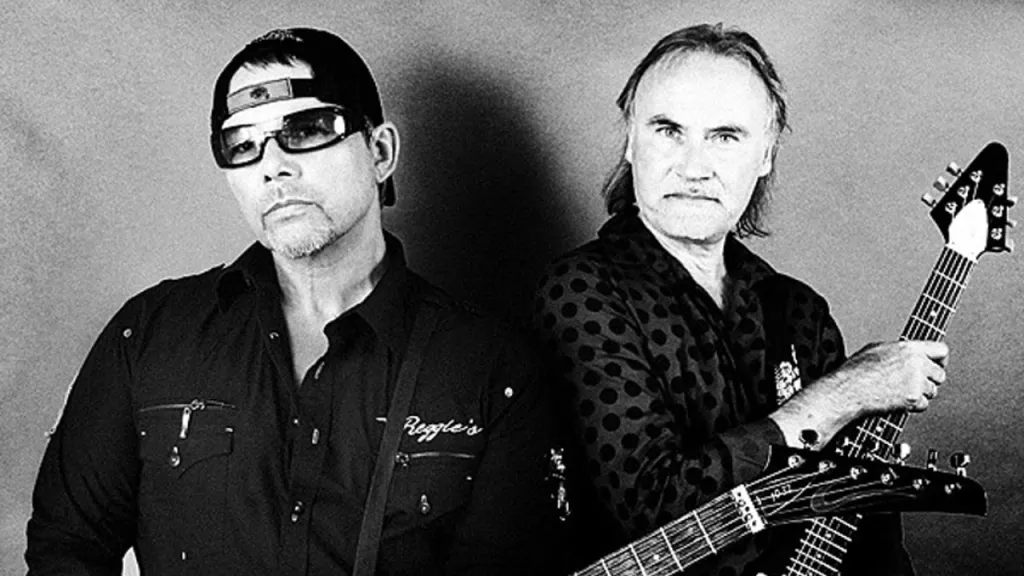(3) The Sherman-Denner guitar duo
It was 1987 when I first encountered the music of King Diamond. Back then, heavy metal was far from welcome in my country – rock and metal weren’t exactly favored under the communist regime. But once a month, there was a rare treasure: a radio broadcast dedicated to full albums from legendary metal artists. One day, I tuned in and found myself immersed in Fatal Portrait (1986), King Diamond’s first solo release.
That moment rewired my entire perception of music. The album was dark, complex, and haunting – yet strangely beautiful and deeply moving. King’s eerie, otherworldly falsetto wove itself around the tight, imaginative guitar work of Andy LaRocque and Michael Denner, creating something truly unique. I was hooked. I recorded Fatal Portrait onto a cassette and played it obsessively, listening so many times that I must have driven everyone around me insane. Soon, I wasn’t just listening – I was learning the riffs, determined to decode the magic behind the music.
As my fascination with King Diamond deepened, I began researching his earlier work. In 1987, Metal Hammer was only available in its Austrian edition, since the Hungarian version wouldn’t launch until 1989. But even through limited sources, I discovered that before his solo career, King Diamond had fronted a band called Mercyful Fate, where Michael Denner had played alongside another guitar wizard: Hank Shermann.
Not long after, a friend handed me a copy of Melissa (1983), Mercyful Fate’s debut album. That was a turning point. Songs like Evil, Curse of the Pharaohs, Satan’s Fall, and Melissa weren’t just songs – they were intricate, multi-layered compositions that felt more like symphonic masterpieces than traditional rock tracks. Satan’s Fall, with its 11-minute runtime, was the pinnacle of their complexity, packed with unexpected tempo changes and shifting harmonies that kept me on edge.
Their second album, Don’t Break the Oath (1984), took a slightly different but equally captivating approach. Tracks like The Oath and Nightmare were just as intricate but had an even more hypnotic, almost supernatural quality. The chemistry between Shermann and Denner was unparalleled – the way they layered harmonies and structured their compositions felt like pure sorcery.
After Mercyful Fate’s original lineup dissolved in 1985, Fatal Portrait felt like the natural successor to Don’t Break the Oath. Although Hank Shermann was no longer involved, Andy LaRocque stepped in, continuing the tradition of mind-bending guitar work. Even now, I consider Fatal Portrait more of a spiritual sequel to Don’t Break the Oath than anything Mercyful Fate released in the ‘90s.
Looking back, I can say without hesitation that the Shermann-Denner duo shaped the way I approach songwriting. Their ability to weave unconventional song structures, sudden tempo shifts, and eerie harmonies into their music was revolutionary. I fell in love with that kind of progressivity in metal – the kind that keeps you guessing, that refuses to conform to predictability. Even today, I find myself in awe of the sinister groove in A Dangerous Meeting or the chilling harmonies of Black Funeral. These elements carried over into Fatal Portrait as well, in tracks like Lurking in the Dark, The Candle, and Haunted.
I never had the chance to witness Shermann and Denner performing live together – though Mercyful Fate is now touring with Hank Shermann and Mike Wead on guitars. But their legacy is etched into my musical DNA. Their influence goes beyond admiration – it has shaped my own vision of what “ideal music” should be.


